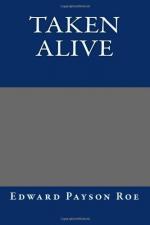My methods of work are briefly these: I go into my study immediately after breakfast—usually about nine o’clock—and write or study until three or four in the afternoon, stopping only for a light lunch. In the early morning and late afternoon I go around my place, giving directions to the men, and observing the condition of vegetables, flowers, and trees, and the general aspect of nature at the time. After dinner, the evening is devoted to the family, friends, newspapers, and light reading. In former years I wrote at night, but after a severe attack of insomnia this practice was almost wholly abandoned. As a rule, the greater part of a year is absorbed in the production of a novel, and I am often gathering material for several years in advance of writing.
For manuscript purposes I use bound blankbooks of cheap paper. My sheets are thus kept securely together and in place—important considerations in view of the gales often blowing through my study and the habits of a careless man. This method offers peculiar advantages for interpolation, as there is always a blank page opposite the one on which I am writing. After correcting the manuscript, it is put in typewriting and again revised. There are also two revisions of the proof. While I do not shirk the tasks which approach closely to drudgery, especially since my eyesight is not so good as it was, I also obtain expert assistance. I find that when a page has become very familiar and I am rather tired of it, my mind wanders from the close, fixed attention essential to the best use of words. Perhaps few are endowed with both the inventive and the critical faculty. A certain inner sense enables one to know, according to his lights, whether the story itself is true or false; but elegance of style is




